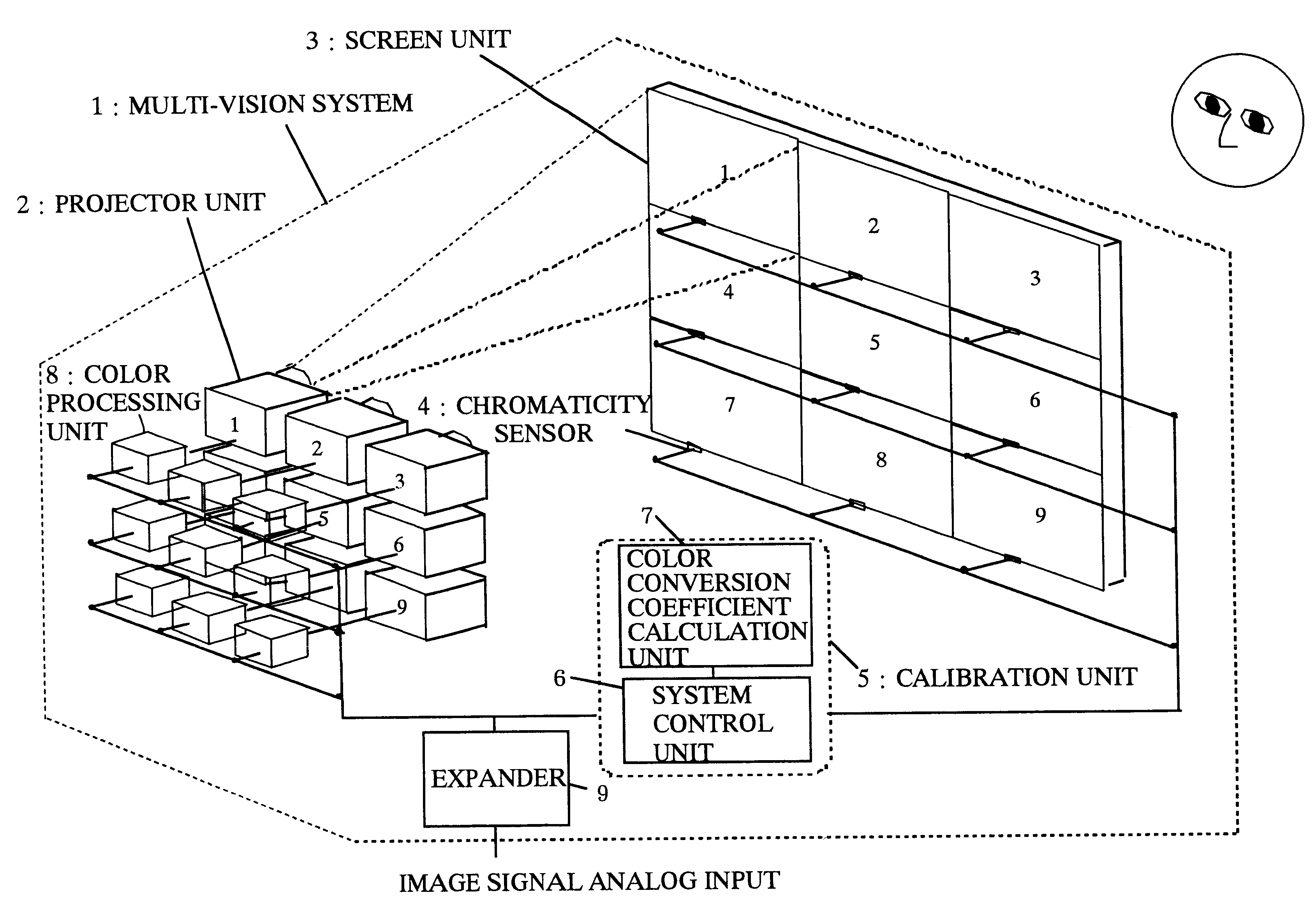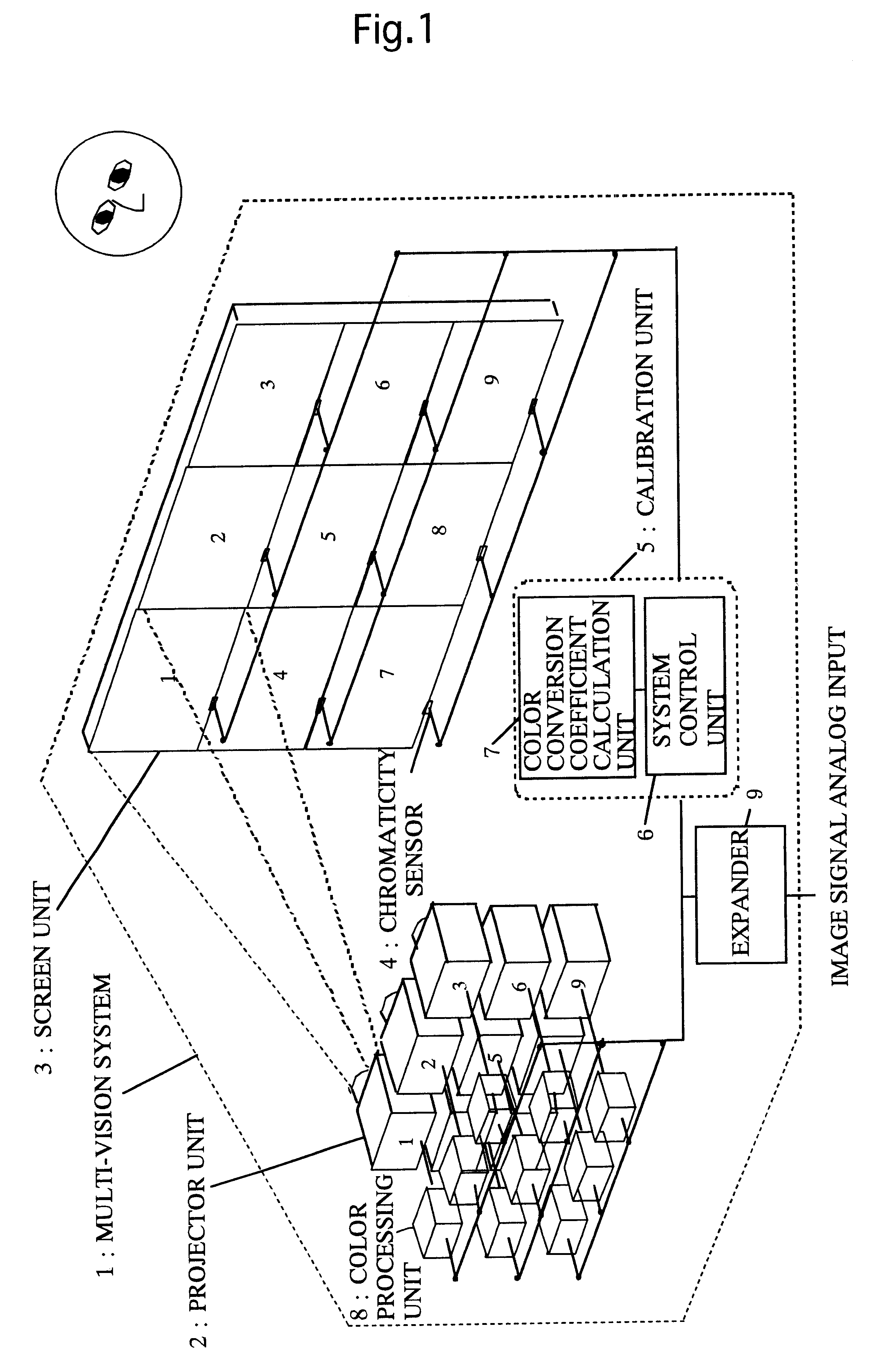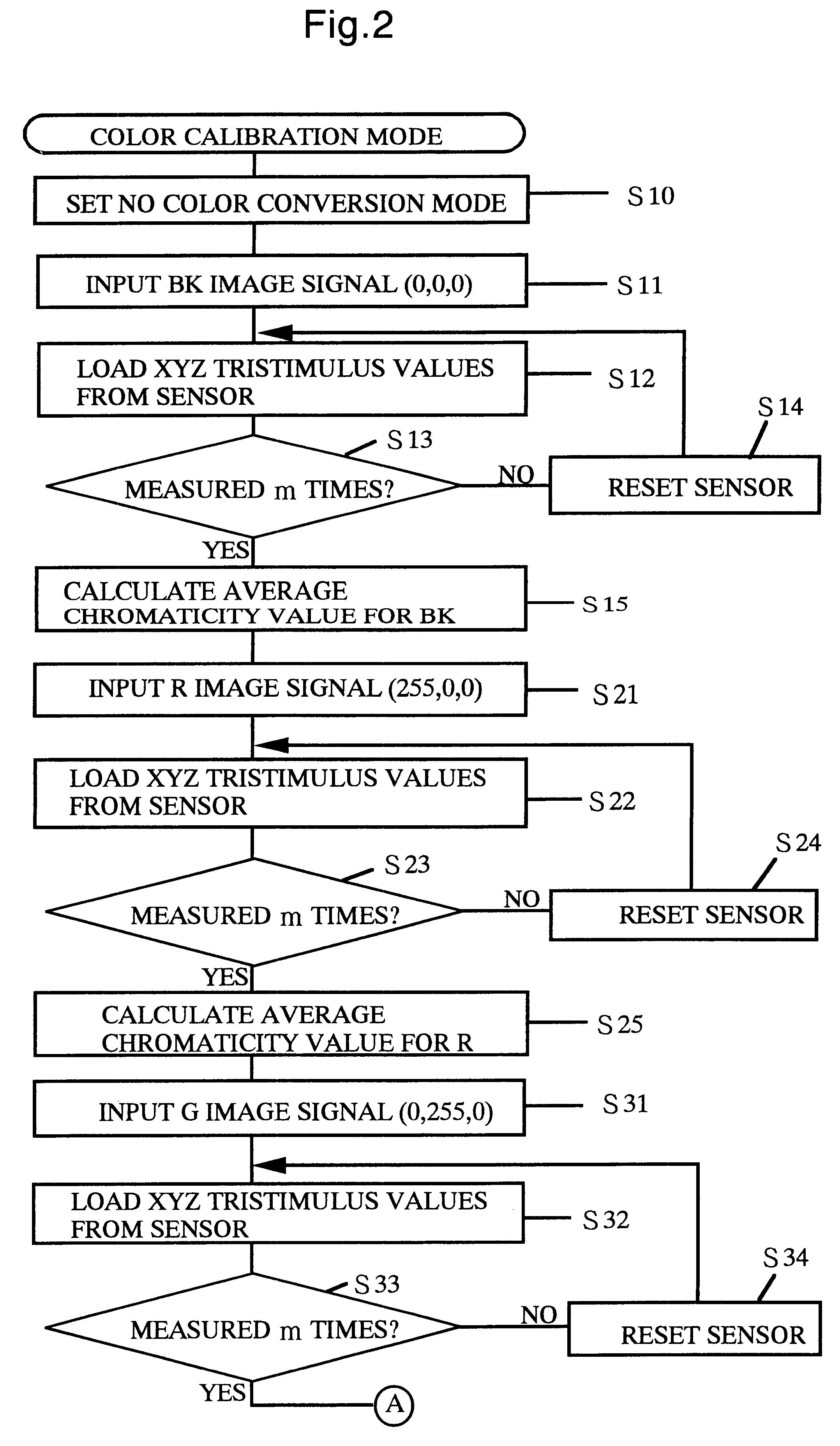Multivision system, color calibration method and display
a multi-vision system and color calibration technology, applied in the field of multi-vision system, color calibration method and display, can solve the problems of uneven color display, inability to control the display color,
- Summary
- Abstract
- Description
- Claims
- Application Information
AI Technical Summary
Problems solved by technology
Method used
Image
Examples
embodiment 1
of the present invention is described below with reference to the drawings.
FIG. 1 shows the whole block chart of the multi-vision system comprising a color calibration function as one of the embodiments in the present invention.
With reference to FIG. 1, the numbered components will be described: an outline 1 of the multi-vision system; projector units 2; and screen units 3. Note that each one of the projector units 2 corresponds with one of the screen units 3. An analog image signal inputted to an expander 9 is enlarged and divided, and image signals are generated for every one of the projector units 2. The image signals are inputted to the projector units 2 via color processing units 8.
Also, chromaticity sensors 4 are set between the screen units 3. The chromaticity sensors 4 are positioned so as to be able to perform colorimetry of corresponding projector units 2 for the color of the light source without color conversion by the color processing unit 8. A calibration unit 5 is conf...
embodiment 2
Embodiment 2 of the present invention will be described with reference to the drawing.
FIG. 6 is the whole block chart of the multi-vision system provided with the color calibration function, showing one of the embodiments in the present invention.
The characteristic of embodiment 2 being different from embodiment 1 is that the positions of the chromaticity sensors 4 are outside of the multi-vision system, as illustrated in FIG. 6. Unlike embodiment 1, the sensor of the embodiment 2 does not perform colorimetry of the light source, but it performs colorimetry for the colors of the screen unit 3. Also, the sensor in embodiment 1 is measuring a light leaking to outside of the screen, however, in the system of embodiment 2, a color at the screen center is measured by the sensor. The method of calibration is same as embodiment 1.
According to the present embodiment, since the chromaticity sensors, which perform colorimetry of the plurality of the display units, are placed outside of the mu...
embodiment 3
Embodiment 3 of the present invention will be described with reference to the drawings.
FIG. 7 is the whole block chart of the multi-vision system provided with the color calibration function, showing one of the embodiments in the present invention.
The characteristic of embodiment 3 being different from embodiment 1 is that a smaller number of chromaticity sensors 4 than the number of display units are placed outside of the multi-vision system, as illustrated in FIG. 7. These chromaticity sensors 4 are arranged in a line on top a sensor unit 10. The number of chromaticity sensors 4 in the sensor unit 10 are same as the number of the display units that are aligned horizontally in one line. As illustrated in FIG. 7, the sensor unit 10 is provided with a mechanism that scans in parallel to multi-vision, which is a direction A (the mechanism not illustrated). While the sensor unit 10 scans the multi-vision in up and down directions, the sensor unit 10 performs colorimetry at a plurality ...
PUM
 Login to View More
Login to View More Abstract
Description
Claims
Application Information
 Login to View More
Login to View More - R&D
- Intellectual Property
- Life Sciences
- Materials
- Tech Scout
- Unparalleled Data Quality
- Higher Quality Content
- 60% Fewer Hallucinations
Browse by: Latest US Patents, China's latest patents, Technical Efficacy Thesaurus, Application Domain, Technology Topic, Popular Technical Reports.
© 2025 PatSnap. All rights reserved.Legal|Privacy policy|Modern Slavery Act Transparency Statement|Sitemap|About US| Contact US: help@patsnap.com



